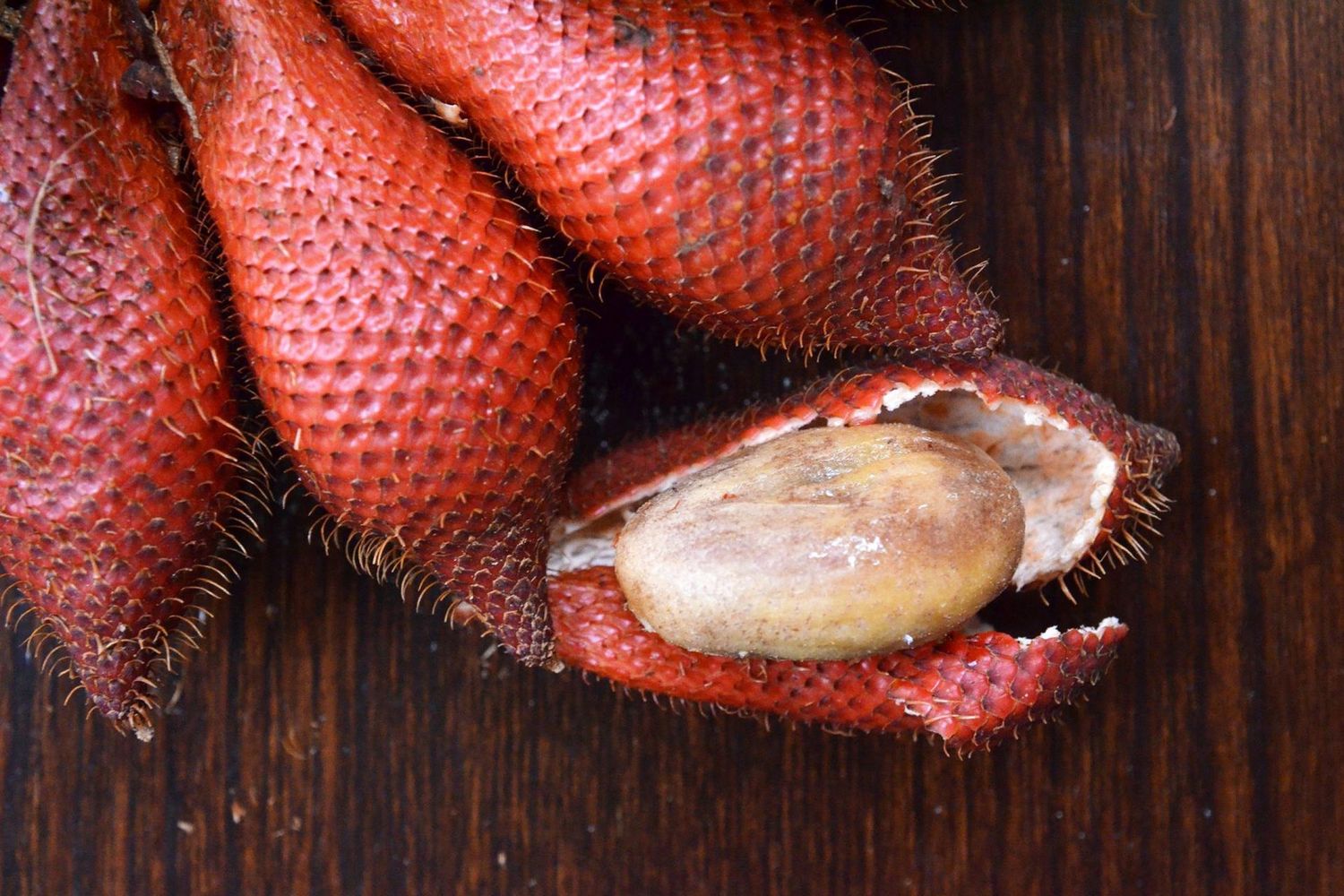
Salak, also known as snake fruit, is a tropical fruit native to Indonesia. Its unique scaly skin resembles a snake's, hence the name. But what makes this fruit so special? Salak is not just a visual curiosity; it packs a punch with its sweet, tangy flavor and crunchy texture. This exotic fruit is loaded with vitamins, minerals, and antioxidants, making it a nutritious snack. Whether you're a fruit enthusiast or just curious about new flavors, salak offers a delightful experience. Ready to learn more? Here are 25 fascinating facts about this intriguing fruit that will leave you craving a taste!
What is Salak?
Salak, also known as snake fruit, is a tropical fruit native to Indonesia. Its unique appearance and taste make it a fascinating subject. Let's dive into some intriguing facts about this exotic fruit.
-
Salak gets its nickname "snake fruit" from its reddish-brown scaly skin, which resembles snake scales.
-
The fruit grows on a species of palm tree called Salacca zalacca, which is native to Java and Sumatra in Indonesia.
-
Salak is typically the size of a fig, with a pointed tip and a slightly acidic taste.
-
The flesh inside is crunchy and juicy, often compared to apples or pineapples.
Nutritional Value of Salak
Salak is not just tasty; it's also packed with nutrients. Here are some facts about its nutritional benefits.
-
Rich in fiber, salak aids in digestion and helps maintain a healthy gut.
-
High in antioxidants, it helps combat free radicals in the body.
-
Contains essential vitamins like Vitamin C and Vitamin A, which boost the immune system and improve vision.
-
Salak is also a good source of minerals such as potassium, calcium, and iron.
Culinary Uses of Salak
Salak is versatile in the kitchen. It can be used in various dishes and preparations.
-
Often eaten fresh, salak can also be pickled or canned.
-
In Indonesia, it's common to find salak in fruit salads and desserts.
-
Salak chips, made by frying thin slices of the fruit, are a popular snack.
-
The fruit can be used to make jams and jellies, adding a unique flavor to spreads.
Growing and Harvesting Salak
Understanding how salak is cultivated and harvested can give insight into its availability and quality.
-
Salak trees thrive in tropical climates, requiring plenty of sunlight and well-drained soil.
-
The trees are usually grown in clusters, as they are dioecious, meaning male and female flowers grow on separate plants.
-
Harvesting salak is a labor-intensive process due to the thorny nature of the palm tree.
-
The fruit is typically harvested by hand, ensuring that only the ripest fruits are picked.
Cultural Significance of Salak
Salak holds a special place in the cultures where it is grown and consumed.
-
In Indonesia, salak is often given as a gift during festive occasions.
-
The fruit is featured in traditional Indonesian markets, known as "pasar," where it is sold fresh and in various preparations.
-
Salak has been used in traditional medicine for its purported health benefits, including improving eye health and boosting energy.
-
The fruit is also a symbol of fertility and prosperity in some Indonesian cultures.
Fun and Lesser-Known Facts About Salak
Here are some quirky and lesser-known tidbits about salak that might surprise you.
-
Despite its tough exterior, the fruit is relatively easy to peel by hand.
-
Salak seeds are not edible but can be used to grow new trees.
-
The fruit's unique taste profile includes hints of banana, pineapple, and even honey.
-
Salak is sometimes used in beauty products for its antioxidant properties.
-
The fruit has gained popularity outside Indonesia, with countries like Thailand and Malaysia also cultivating it.
The Final Bite
Salak, or snake fruit, isn't just a quirky name. This tropical gem packs a punch with its unique taste, nutritional benefits, and cultural significance. From its crunchy texture to its sweet and tangy flavor, it’s a treat for the senses. Plus, it’s loaded with vitamins, minerals, and antioxidants that can boost your health. Whether you’re munching on it fresh, adding it to a fruit salad, or trying it in a traditional dish, salak is a versatile fruit worth exploring. Next time you spot this spiky-skinned wonder, give it a try. You might just find a new favorite snack. So, go ahead, take a bite out of salak, and enjoy all the goodness it has to offer.
Was this page helpful?
Our commitment to delivering trustworthy and engaging content is at the heart of what we do. Each fact on our site is contributed by real users like you, bringing a wealth of diverse insights and information. To ensure the highest standards of accuracy and reliability, our dedicated editors meticulously review each submission. This process guarantees that the facts we share are not only fascinating but also credible. Trust in our commitment to quality and authenticity as you explore and learn with us.
